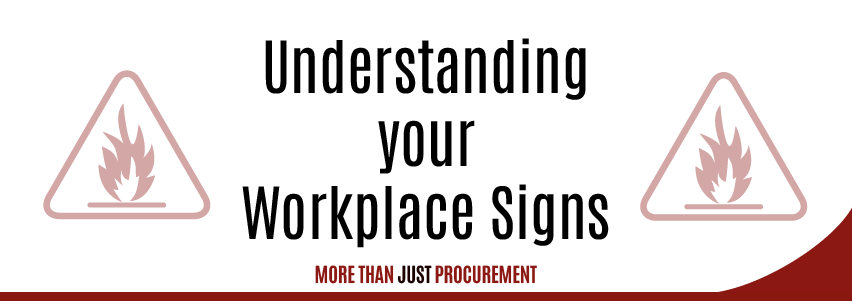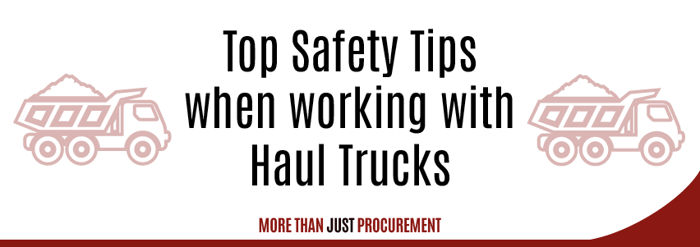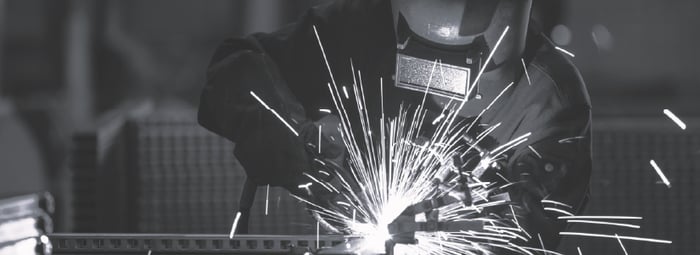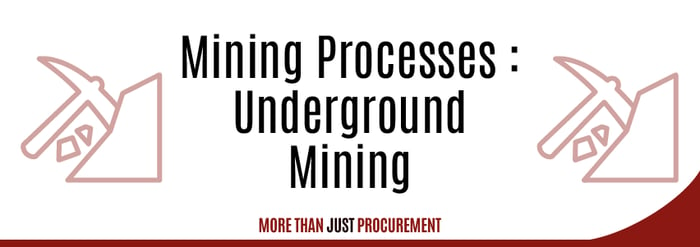Understanding your Workplace Signs
Tips & Tricks • 6 min read • Jul 21, 2022 4:05:20 PM • Written by: Amelia Inskipp

Whether you work on a mine site, construction site or even in an office, signage is a vital and pivotal part to the safety of an area. Signs often display clear health and safety messages to ensure the welfare of its workers are upheld.
Not only is it a form of communication for workers, but it also allows for the increase of awareness as well as ensuring that operations run smoothly. A site that has inadequate signage can lead to serious injury and even if the worst of instances, death.
Therefore, in this week’s blog post we look at not only how to make an environment safer with signs, but also understanding signage and why we need it. We will look in detail at three areas which may be of concern to you, your clients, and your workers.
Mine Sites
Mines are notoriously hazardous, with explosions, falling rocks, transportation risks and even hazardous chemicals, in which this exposure can pose an abundance of risks. Therefore, signs are a vital form of communication for a site and essential for every day working.
When you think of the mining industry, immediately large underground craters and open pits spanning for many kilometres comes to mind. Therefore, to even navigate some of these spaces, directional and traffic signs are essential for operations to run smoothly. As mines are so vast, signs to warn people of the dangers are put in place to either avoid certain areas or where there are other features that could pose a threat to workers such as falling rocks or uneven surfaces.
Like any workplace, there is an essential need for directional signs to mark exit routes or where to find spaces within the mine. These especially play a critical role in underground mines when power shortages occur. Therefore, they are usually made from either reflective or luminous materials that can be seen in the dark or with a torch or headlamp
There are also many moving vehicles and individuals on a site, so clear traffic and pedestrian signs are present to prevent collisions from occurring. These signs may indicate speed limit, where there may be an influx of vehicles, pedestrians or where it is safe for employees to walk without being concerned about hazards.
Explosions can be a common occurrence, especially in underground mines. So, as well as implementing proper safety measures to prevent explosions from occurring, signs can help employees to reduce the risk of eruptions. This can include danger signs indicating where flammable materials may be, as well as no smoking signs and no open flames. These signs are in conjunction with fire signs, indication possible ignition sources and where the correct fire safety equipment may be such as fire extinguishers.
![Signs [Converted]-04](https://www.storm-procurement.com/hs-fs/hubfs/Blog%20Post/Signs%20%5BConverted%5D-04.png?width=365&name=Signs%20%5BConverted%5D-04.png)
It is compulsory for mines to follow the requirements when handling hazardous chemical which is stated in the Hazard Communication Standard (HCS). This means that any containers with chemicals in them must be correctly labels with what they contain and what hazard it can cause. Along with aligning with the HCS, it must also draw on the Globally Harmonized System (GHS) which ensure that labels are kept consistent. These signs appear as a black icon in a white box with a framed red border. Some of these icons include health hazard (respiratory sensitiser), flames (flammable), corrosion (burns) and skull and crossbones (toxic).
It is a fundamental rule that miners must wear personal protective equipment (PPE). This includes hard hats, eye protection, steel-toed boots, and hearing protection. Reminders about wearing these come in the form of signs. They should be prevalent in areas with high-risk threats such as falling rocks of where machinery is being used.
Although signs show a clear and conveyed message and are universal, standard generic signage will not suffice. No two mines are alike therefore there is not a one size fits all approach, so having the correct signs displayed is a must. Customised signs can build further protection by suiting the uniqueness of your site.
However, even with an abundance of signs across your site, the reliance on signs is not enough for adequate safety measures. Other things such a lighting and proper safety equipment is also essential for workers to be in a safe environment.
Construction Sites
As constructions sites occur everywhere across the world and not just in remote places, signs are there to implement safety measure for onsite workers, but also for members of the public, who could be at risk from passing by.
All safety signs must follow regulations set by governments and being aware of the different meanings of different signs, puts you in the best possible position for recognising hazards and avoiding any risky situations.
For constructions sites, there are different types of safety signs. The main ones recognised are mandatory signs, prohibitions signs, safety conditions signs, warning and fire equipment signs. Each there to indicate different ways to operate.
Mandatory signs are blue and white signs which are there to display actions which must be obeyed. Some examples of this may be ‘Wear Hard Hats’ or ‘Hearing Protection must be Worn’. The opposite of these signs are prohibitions signs. These are the most recognised signs and are usually associated to danger. The most common prohibition sign that will be seen on a construction site is usually ‘No Entry’ which is a public facing prohibitions sign. Others may include ‘No Smoking’ or ‘No Unauthorised Access’. Prohibitions signs are always displayed as a red circle with a line across.![Signs [Converted]-02](https://www.storm-procurement.com/hs-fs/hubfs/Blog%20Post/Signs%20%5BConverted%5D-02.png?width=530&name=Signs%20%5BConverted%5D-02.png)
Safety condition signs are some of the more recognisable signs, even to those not working on a construction site. These signs are there alerting you to safety or a safe place. Some of these will include the fire exits or leading you to the location of a first aid kit. Safety condition signs are always green and usually rectangular.
Unlike many of the other signs, warning signs are not there to tell you what must or mustn’t be done, they are there to alert you to possible dangers and hazards surrounding the area. Warning signs are yellow and usually have a triangle with and exclamation mark inside them. These are some of the first signs you might see when passing a construction site warning you that the site is there. Other examples may include ‘Wet Floor’, ‘Danger’ and ‘High Voltage’.
The final signs on a construction site are fire equipment signs. These are there to indicate where the location of the fire equipment may be. These signs are displayed in a solid red rectangle with white symbols and wording. Examples of these signs are ‘Fire Alarm’ ‘Fire Blanket’ and ‘Fire Extinguisher’.
![Signs [Converted]-03-1](https://www.storm-procurement.com/hs-fs/hubfs/Blog%20Post/Signs%20%5BConverted%5D-03-1.png?width=790&name=Signs%20%5BConverted%5D-03-1.png)
Just like mine sites, while safety signs are vital to the security of whomever may be on site, workers need to be adequately trained on the safety measures when working. This can include using equipment correctly and how to operate safely around the site.
In Office
In many instances office signage is overlooked (the opposite of its purpose!). As offices are viewed as less hazardous than sites such as mines or constructions, signs aren’t as prevalent but are just as valuable. It is also important for employers to have risk assessments in place to safeguard their workers and guarantee they are in the safest of situations.
The most familiar office signs are fire safety signs. These are spread around the office area to inform staff of the fire exits, fire assembly points and who to contact in case of a fire.
Employers have a duty to ensure employees feel safe in their work environment and are aware of what all signs mean and what to do in an emergency. Furthermore, training in safety procedures is key in an office environment. Fire tests and important to ensure workers know where they need to go and is a good preparation to confirm safety is upheld if a crisis was to arise.
Making employees aware of good practices of safety measures are key to staff all doing their part to prevent disasters from occurring. This can be in the form of cable management, clear walkways, and tidy desks.
Conclusion
Although all signs are an important part of security, you cannot just be dependent on signs to ensure safety within a workplace. Not only do signs help to reduce risks, but they also reinforce rules in a workspace for people to remember and always be cautious. They are there to act as a reminder for workers as they should already have adequate safety training. One example of this is checking how much protection the equipment you are using is providing. See our previous blog post on hard hat safety for more information.
Sites can be kept safer through choosing signs which can be seen in any type of condition such as low light environments. It is also important to note that signs may need replacing over time due to wear and tear, especially in circumstances where they are more prone to be damaged from weather or debris.
Whether you need every day signage or signs bespoke to you, we can offer the solution to your safety solicitudes.
View our mining and constructions brochures to see our capabilities.
Reach the World. Giving Made Easy with Impact.
Amelia Inskipp
Related Articles

Tips & Tricks
Top Safety Tips when working with Haul Trucks

Tips & Tricks
Technology and Mining Safety

Business News
Mining Processes: Underground Mining
Don't Miss Out On A Thing
Sign up and Join Our Newsletter Today

